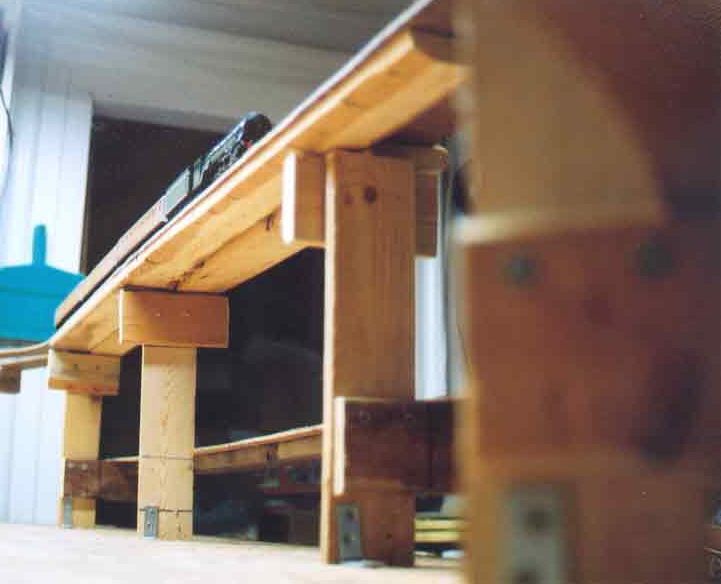--more--

The high-level north girder, composed of two parallel furring strips supported by three columns, carries the roadbed at the upper level (12 inches). The "Flying Scotsman" can be seen standing upon the high north girder in this view.
The mid-level north girder is made from a single furring strip supported by two projecting cantilevered beams attached to the outer two of the three north columns (a cantilever beam is a horizontal structual element that is supported at one end, but not at the other end). The mid-level north girder carries the roadbed of the outer spiral at the middle level (4-1/2 inches).
Go to top of page